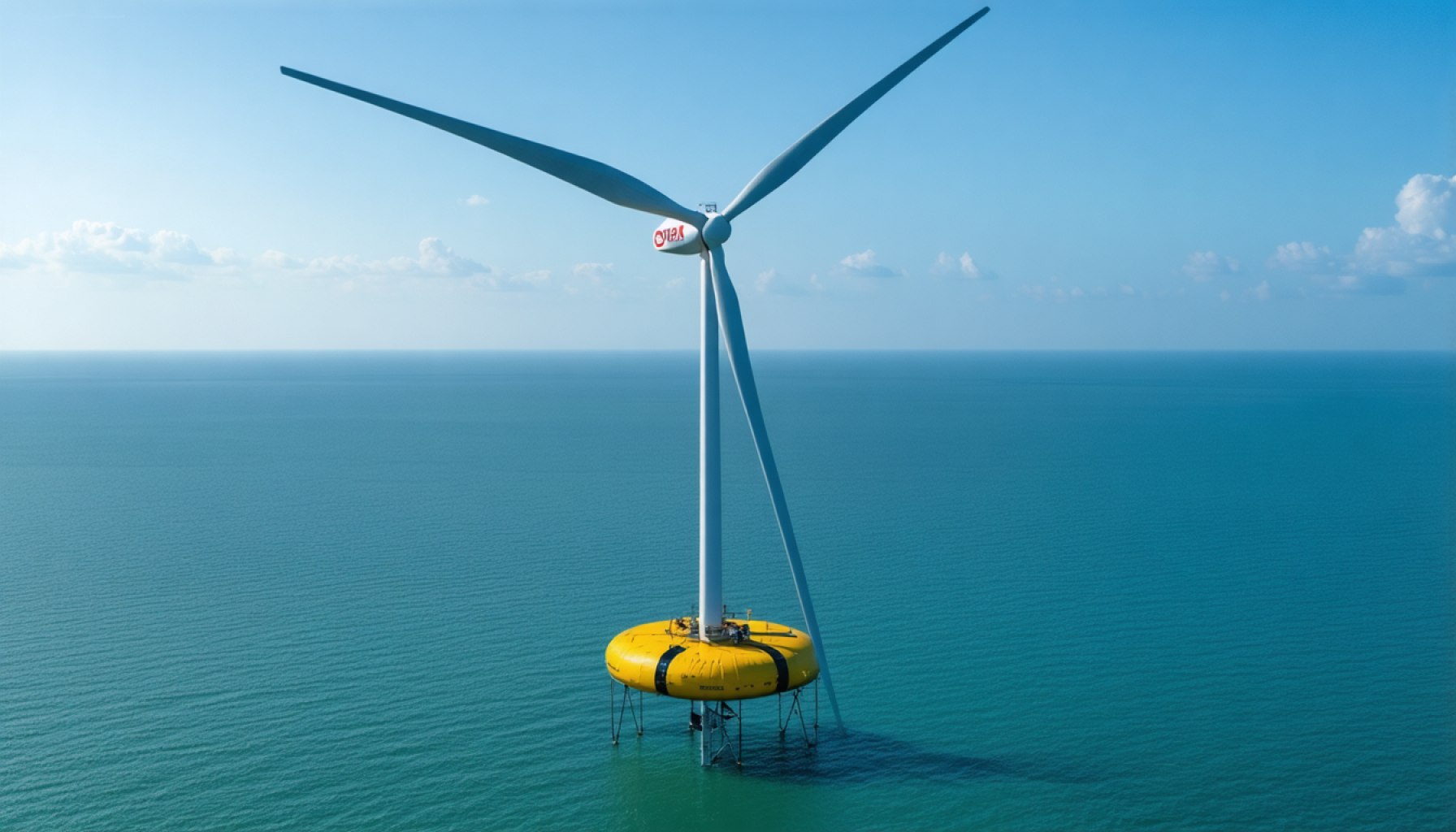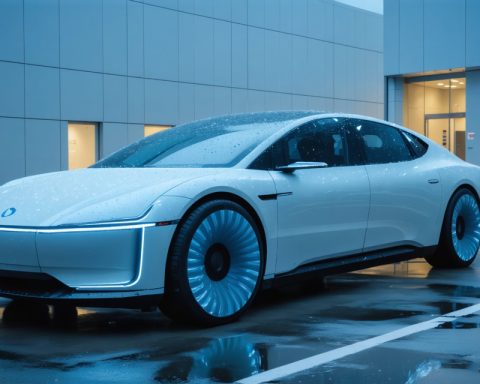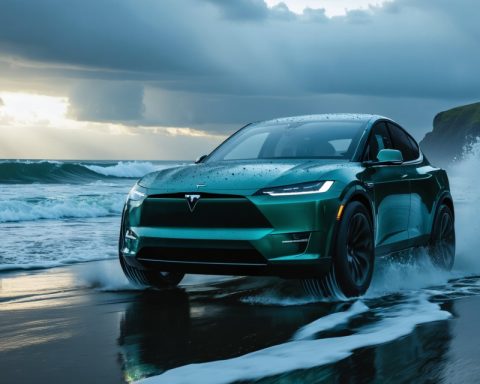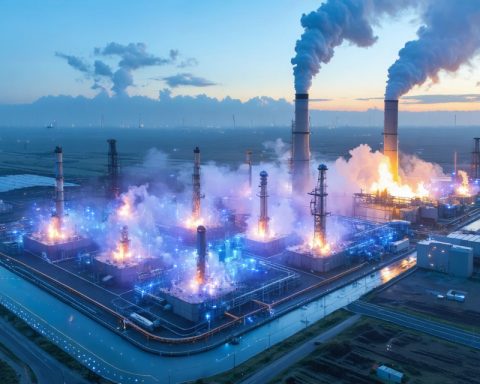- Floating wind turbines harness the vast potential of offshore winds, which are faster and more consistent than onshore winds.
- They are not anchored to the ocean floor, allowing them to operate in deep waters and reducing seabed impact, thus preserving marine ecosystems.
- Countries with extensive coastlines, like the U.S., Japan, and parts of Europe, are investing in this technology to create jobs, empower coastal communities, and reduce fossil fuel dependence.
- Challenges include engineering complexity and high costs, though ongoing innovations are making the technology more accessible and economical.
- Floating turbines represent a significant step towards a sustainable and clean energy future, symbolizing resilience and the potential to harness even the most challenging environments for good.
In an age where climate change stands at the forefront of global challenges, innovators are turning to the vast, untapped potential of the sea. Enter floating wind turbines—a technological marvel that’s redefining how we harvest clean energy from our planet’s abundant resources.
Dancing on the Waves
Picture the vast ocean, stretching into the hazy horizon, where traditional land-bound wind farms are nowhere in sight. Instead, sleek and mighty floating giants rise and fall gracefully with the ocean’s rhythm, capturing the raw, powerful winds of the open sea.
Unlike their anchored counterparts, floating turbines are not tethered to the ocean floor. They ride the currents, towered on platforms built to withstand the ocean’s tumultuous dance. Anchors and moorings keep them steady, letting these man-made leviathans turn the fiercest ocean gusts into a whirl of renewable energy.
The Innovation Beneath
The floating nature of these turbines opens new doors. Offshore winds pack a punch. They blow faster and more consistently than those on land, promising a goldmine of clean energy. Traditional turbines often falter in deep waters, limited by the need for seabeds shallower than 60 meters. Floating designs, however, thrive in deeper waters—unlocking areas previously thought unreachable.
Environmental Harmony
Floating wind farms boast another advantage—they gently step upon the delicate marine ecosystems below. Unlike fixed-bottom turbines that might disrupt marine life during installation, floating systems employ minimal seabed intervention. This respect for the undersea world aligns perfectly with the growing call for sustainable development that honors nature’s balance.
Charting New Waters
Countries bordered by vast coastlines, such as the United States, Japan, and parts of Europe, are investing heavily in this technology. For instance, the Hywind Scotland project, launched in 2017, showcases how pilot projects can scale into viable commercial solutions. These dynamic fields offer potential beyond power—they empower coastal communities, create jobs, and push us away from harmful fossil dependence.
Facing the Gale
However, the technology isn’t without its squalls to weather. Engineering complexity remains high; each turbine stands as a testament to human ingenuity and marine engineering prowess. Costs, while falling, still hover above traditional methods. Yet, with every innovation, from new materials to improved installation methods, we chart a course towards more accessible, economical solutions.
Betting on the Horizon
As our planet continues its rapid technological ascent, floating wind turbines shine brightly on the horizon of possibility. Humanity’s energy journey, once confined to smoke and combustion, now sails toward a cleaner, more sustainable future, powered by the wild winds of progress.
The Final Takeaway
Floating wind turbines embody our race toward a clean energy future. Their success isn’t just a technical victory—it’s a powerful symbol that even the most challenging environments can be harnessed for good. By looking to the seas, we embrace an energy transition that steers our planet towards resilience, innovation, and hope—a future where clean energy flows as freely as the wind itself.
The Future of Energy: Exploring the Untapped Potential of Floating Wind Turbines
Harnessing the Ocean Winds: A New Era of Renewable Energy
In the quest for sustainable energy solutions, floating wind turbines represent a groundbreaking leap forward, tapping into the vast and powerful resources found in the world’s oceans. This innovation not only promises a significant boost in renewable energy output but also champions environmental sustainability and economic growth.
Unveiling the Potential: How Floating Wind Turbines Work
Floating wind turbines employ advanced engineering to remain stable while being stationed in deep waters. Unlike traditional offshore wind turbines that require anchoring to the seabed, floating turbines use a system of mooring lines that keep them in place, allowing for deployment in waters up to 200 meters deep, significantly expanding the feasible areas for wind farm development.
Real-World Impact and Use Cases
Countries with extensive coastlines are leading the charge in deploying this technology. The United Kingdom, Norway, and Japan are at the forefront, with projects like Hywind Scotland illustrating the potential for scalable commercial solutions. These floating wind farms are expected to play a crucial role in meeting renewable energy targets and reducing reliance on fossil fuels.
Market Forecasts and Industry Trends
The global floating wind energy market is set to experience significant growth. According to a report by the International Energy Agency, floating offshore wind could provide 20% of the world’s electricity by 2050. As technology advances and production costs decrease, we can expect more countries to invest heavily in this sector.
Technical Challenges and Innovations
Despite their promise, floating wind turbines face several challenges, primarily related to high initial costs and engineering difficulties in harsh marine environments. However, advancements in materials, such as lighter and stronger composites, and innovations in installation techniques are driving down costs and improving the viability of this technology.
Environmental and Economic Benefits
Floating wind turbines offer substantial environmental benefits. With minimal disruption to marine ecosystems, these turbines align with ocean preservation goals. Economically, they provide job opportunities in engineering, manufacturing, and maintenance, particularly benefitting coastal communities.
Pros and Cons Overview
Pros:
– Access to stronger and more consistent wind resources.
– Minimal impact on marine ecosystems.
– Potential for large-scale renewable energy generation.
Cons:
– High initial costs and complex engineering.
– Vulnerability to extreme weather conditions.
– Potential visual impact on seascapes, which may affect tourism.
Future Predictions and Recommendations
As the world continues to prioritize clean energy, floating wind turbines are poised for widespread adoption. Policymakers should focus on supporting research and development, offering incentives to reduce deployment costs, and creating robust regulatory frameworks to manage environmental impacts.
Quick Tips for Actionable Steps
1. Stay Informed: Follow developments in floating wind technology through reputable energy journals and reports.
2. Advocate for Renewables: Encourage local governments and organizations to invest in or support floating wind projects.
3. Sustainability Practices: Individuals and businesses can incorporate renewable energy into their operations, harnessing power from the growing availability of offshore wind energy sources.
In conclusion, floating wind turbines represent not only a technical triumph but a beacon of hope for a sustainable energy future. By unlocking the power of the ocean’s winds, we can pave the way toward an era of clean, renewable energy that meets the demands of both the present and future generations.
For more information about renewable energy solutions and innovations, visit International Energy Agency or Renewable Energy World.














